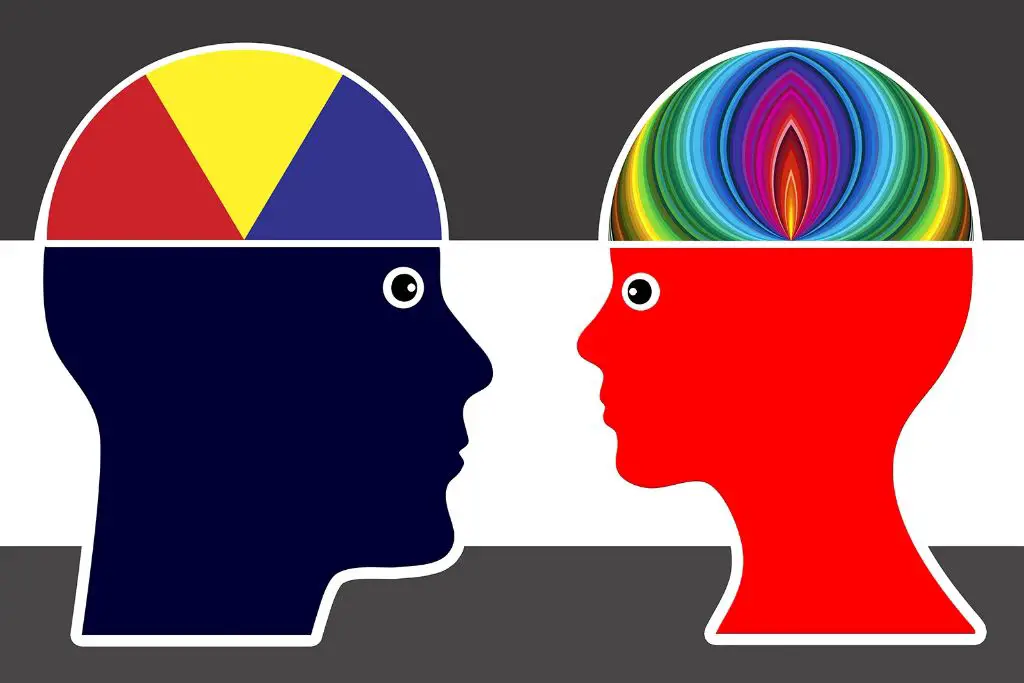It is commonly believed that women can see or distinguish between more colors than men. But is this really true? The answer is more complex than a simple yes or no. There are several factors that influence color perception, including biological differences, language, culture, and interests. This article will explore the evidence around gender differences in color vision, and why women may identify more colors on average.
Biological Differences in Color Vision
On a biological level, women may have a slight advantage in discerning different shades. Human color vision relies on specialized receptor cells in the retina called cones. There are three types of cones that are each sensitive to different wavelengths of light.
| Cone Type | Light Wavelength Detected |
|---|---|
| S cones (short) | Blue light |
| M cones (medium) | Green light |
| L cones (long) | Red light |
The three cone types work together to help us see the range of colors. Research has shown that there are slight differences in how these cones function for men and women. On average, women have more cones in the fovea region of the eye compared to men. The fovea is the area responsible for sharp central vision. Having more cones concentrated in this spot allows for greater visual acuity and may help women discriminate between similar shades.
Additionally, the distribution of M and L cones appears to be less regular in male eyes. The uneven spread of cones sensitive to green and red light could make it harder for men to differentiate colors along those wavelengths. So at a purely biological level, the eye anatomy gives women a small edge.
Language and Culture
But biology alone doesn’t fully explain the gender difference in color perception. Social and cultural factors also likely play a role. Studies have found that women are able to consistently name more colors from memory than men. However, when tested using color samples, the differences in visual ability are much smaller. This suggests that language skills influence how we categorize colors.
Women typically have an advantage in language processing over men. The extra vocabulary for color terms in women provides more labels to identify subtle shade variations. In addition, social conditioning reinforces this enhanced language ability. Young girls are praised for precise color descriptions like “magenta” or “teal,” while boys are not pushed as strongly to develop these distinctions.
Culture also emphasizes differences in male and female color interests. From a young age, girls are exposed to a wider range of colors through toys, clothes and media. This early familiarity makes women more attentive to subtle color nuances. Men, on the other hand, learn to focus more on objects and spatial relationships than beautiful colors. These social factors amplify a small biological difference into the commonly perceived advantage women have in color perception.
Practical Applications
The slight edge women have in color vision can influence real world activities. Here are some of the practical effects:
| Field | Impact of Superior Color Vision |
|---|---|
| Fashion | Able to make fine color distinctions for clothing and accessories |
| Interior design | Can discriminate between similar paints and fabrics for decoration |
| Art | Better ability to mix paints and detect nuances in shading |
| Cosmetics | More skilled at matching and coordinating makeup tones |
| Medical | Improved perception of skin discolorations and changes |
Women excel in professions like makeup artistry, clothing design, and interior decorating thanks in part to their keen color sense. Color aptitude is valuable for spotting issues in medical images or microscopic samples as well. So the color advantage can be quite useful in daily life and work.
Is the Difference Universal?
Up until now, we’ve discussed differences between color vision in men and women. But does this distinction hold true across all populations? Surprisingly, research indicates the gender gap in color discrimination may actually be smaller or nonexistent in some cultures.
One study compared male and female ability to distinguish colors on the blue-green spectrum in individuals from the UK and the Himba tribe in Namibia. While UK women were better at the task, Himba men and women performed equally well. Scientists believe this is linked to the Himba language, which has fewer basic color terms. With less cultural emphasis on color names, the tribe shows little or no gap.
This indicates language and social norms play a major role in shaping color perception differences. In cultures without strong gender-based divisions in color use, the biological distinctions may be minimized. As societies become more gender-neutral in color education and attitudes, we could see a convergence in color identification skills.
Conclusion
In summary, women are traditionally believed to see more colors than men. This stems from a few biological factors giving women a slight edge in color vision acuity. However, social and cultural influences linked to language, interests and activities also amplify the differences. The variation between cultures indicates that biology alone doesn’t dictate one’s color distinction abilities. While differences may persist, the gap could narrow in societies that reduce gender divisions in color exposure and vocabulary. The next time someone claims women see millions more colors, the truth is a bit more nuanced.


